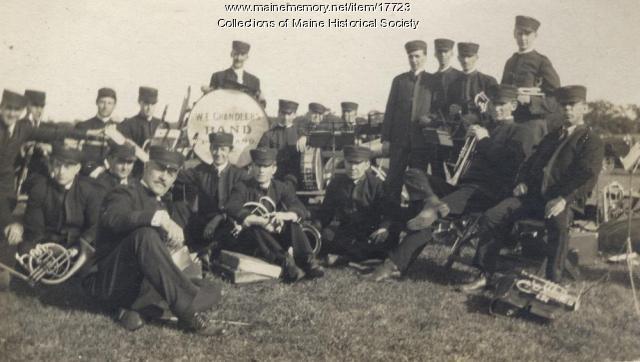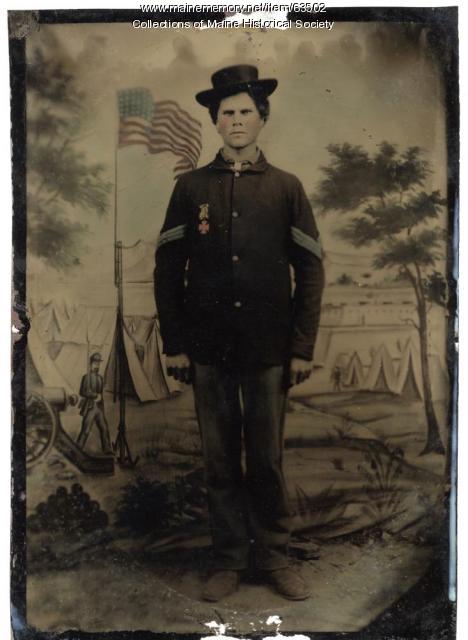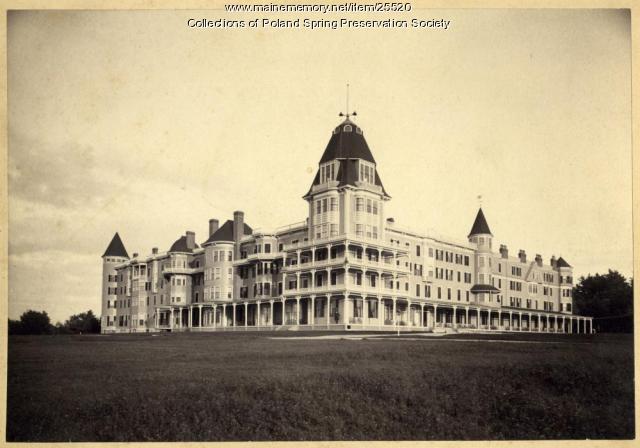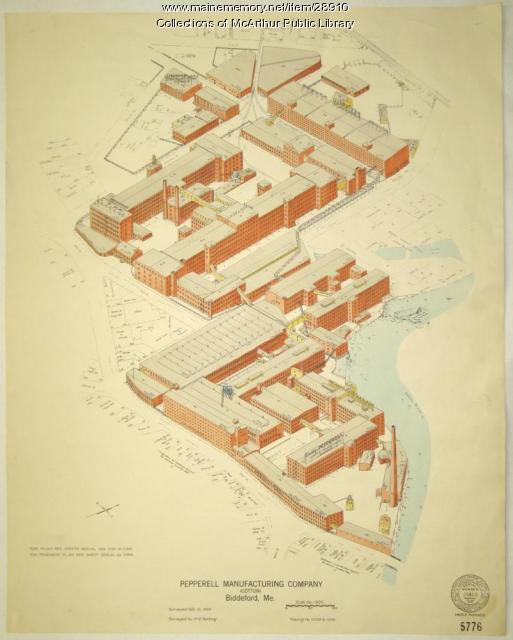Keywords: Portland City Hall
- Historical Items (144)
- Tax Records (84)
- Architecture & Landscape (15)
- Online Exhibits (52)
- Site Pages (22)
- My Maine Stories (4)
- Lesson Plans (0)
Online Exhibits
Your results include these online exhibits. You also can view all of the site's exhibits, view a timeline of selected events in Maine History, and learn how to create your own exhibit. See featured exhibits or create your own exhibit
Exhibit
Sagadahoc County through the Eastern Eye
The Eastern Illustrating and Publishing Company of Belfast, Maine. employed photographers who traveled by company vehicle through New England each summer, taking pictures of towns and cities, vacation spots and tourist attractions, working waterfronts and local industries, and other subjects postcard recipients might enjoy. The cards were printed by the millions in Belfast into the 1940s.
Exhibit
In 1857, when Daniel Cough left Amoy Island, China, as a stowaway on a sailing ship from Mt. Desert Island he was on his way into history as the first Chinese person to make his home in Maine. He was soon followed by a cigar maker and a tea merchant who settled in Portland and then by many more Chinese men who spread all over Maine working mostly as laundrymen.
Exhibit
Mainers, like residents of other states, had differing views about slavery and abolition in the early to mid decades of the 19th century. Religion and economic factors were among the considerations in determining people's leanings.
Exhibit
Immigration is one of the most debated topics in Maine. Controversy aside, immigration is also America's oldest tradition, and along with religious tolerance, what our nation was built upon. Since the first people--the Wabanaki--permitted Europeans to settle in the land now known as Maine, we have been a state of immigrants.
Exhibit
From Fredericksburg to Appomattox, from August 1862 to June 1865, the 17th Maine Infantry Regiment's raw, untrained and undisciplined recruits soon learned to be soldiers. The 17th Maine was known as the Red Diamond Regiment.
Exhibit
Black soldiers served in Maine during World War II, assigned in small numbers throughout the state to guard Grand Trunk rail lines from a possible German attack. The soldiers, who lived in railroad cars near their posts often interacted with local residents.
Exhibit
The astronomical arrival of winter -- also known as the winter solstice -- marks the year's shortest day and the season of snow and cold. It usually arrives on December 21.
Exhibit
Public education has been a part of Maine since Euro-American settlement began to stabilize in the early eighteenth century. But not until the end of the nineteenth century was public education really compulsory in Maine.
Exhibit
A Riot of Words: Ballads, Posters, Proclamations and Broadsides
Imagine a day 150 years ago. Looking down a side street, you see the buildings are covered with posters and signs.
Exhibit
Before the era of recorded music and radio, nearly every community had a band that played at parades and other civic events. Fire departments had bands, military units had bands, theaters had bands. Band music was everywhere.
Exhibit
In Maine, like many other states, a newly formed Ku Klux Klan organization began recruiting members in the years just before the United States entered World War I. A message of patriotism and cautions about immigrants and non-Protestants drew many thousands of members into the secret organization in the early 1920s. By the end of the decade, the group was largely gone from Maine.
Exhibit
Maine's Untold Vegetarian History
Vegetarianism has deep roots in Maine and this first-of-its-kind exhibition explores this untold story.
Exhibit
Bowdoin College Scientific Expedition to Labrador
"The Bowdoin Boys" -- some students and recent graduates -- traveled to Labrador in 1891 to collect artifacts, specimens, and to try to find Grand Falls, a waterfall deep in Labrador's interior.
Exhibit
Remembering Mellie Dunham: Snowshoe Maker and Fiddler
Alanson Mellen "Mellie" Dunham and his wife Emma "Gram" Dunham were well-known musicians throughout Maine and the nation in the early decades of the 20th century. Mellie Dunham also received fame as a snowshoe maker.
Exhibit
Maine Streets: The Postcard View
Photographers from the Eastern Illustrating and Publishing Co. of Belfast traveled throughout the state, especially in small communities, taking images for postcards. Many of these images, taken in the first three decades of the twentieth century, capture Main Streets on the brink of modernity.
Exhibit
"We are growing to be somewhat cosmopolitan..." Waterville, 1911
Between 1870 and 1911, Waterville more than doubled in size, becoming a center of manufacturing, transportation, and the retail trade and offering a variety of entertainments for its residents.
Exhibit
For the Union: Civil War Deaths
More than 9,000 Maine soldiers and sailors died during the Civil War while serving with Union forces. This exhibit tells the stories of a few of those men.
Exhibit
This Rebellion: Maine and the Civil War
For Mainers like many other people in both the North and the South, the Civil War, which lasted from 1861-1865, had a profound effect on their lives. Letters, artifacts, relics, and other items saved by participants at home and on the battlefield help illuminate the nature of the Civil War experience for Mainers.
Exhibit
Poland Spring: Summering in Fashion
During the Gilded Age at the end of the nineteenth century, Americans sought to leave increasing urban, industrialized lives for the health and relaxation of the country. The Poland Spring resort, which offered a beautiful setting, healing waters, and many amenities, was one popular destination.
Exhibit
Summer Folk: The Postcard View
Vacationers, "rusticators," or tourists began flooding into Maine in the last quarter of the 19th century. Many arrived by train or steamer. Eventually, automobiles expanded and changed the tourist trade, and some vacationers bought their own "cottages."
Exhibit
Lincoln County through the Eastern Eye
The Penobscot Marine Museum’s photography collections include nearly 50,000 glass plate negatives of images for "real photo" postcards produced by the Eastern Illustrating and Publishing Company of Belfast. This exhibit features postcards from Lincoln County.
Exhibit
In Time and Eternity: Shakers in the Industrial Age
"In Time and Eternity: Maine Shakers in the Industrial Age 1872-1918" is a series of images that depict in detail the Shakers in Maine during a little explored time period of expansion and change.
Exhibit
Biddeford, Saco and the Textile Industry
The largest textile factory in the country reached seven stories up on the banks of the Saco River in 1825, ushering in more than a century of making cloth in Biddeford and Saco. Along with the industry came larger populations and commercial, retail, social, and cultural growth.
Exhibit
For one hundred years, Acadia National Park has captured the American imagination and stood as the most recognizable symbol of Maine’s important natural history and identity. This exhibit highlights Maine Memory content relating to Acadia and Mount Desert Island.
























